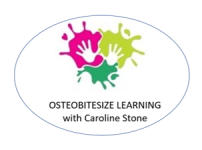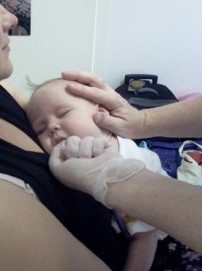Welcome to Caroline Stone's Osteobitesize
50% site-wide offer:
# email me on osteobitesize@gmail.com or whatsapp +447508843232
Browse the categories to find your course title, or use the search bar - choose your course / courses - then I will send you a payment link once you have emailed me the details of your choice. You will also need to make an account here - the confirmation email link may not work - if it doesn't simply email me. Once I have your payment (of half the fee of your chose course(s) I will manually enrol you.
Thank yo for supporting me at this time.
This 50% off offer also applies to the online only courses on cnmo.co.uk - again, email me for help to organise these discounts.
SCROLL DOWN TO EXPLORE ALL THE COURSES - YOU CAN BUY LONG-TERM ACCESS TO THESE FULL-LENGTH LEARNING PROGRAMMES HERE.
This moodle website contains all for Caroline Stone's long-version elearning courses in osteopathic care and functional manual medicine.
If you are re-joining your course previously hosted on osteobitesize.com, go to login here, and attempt to log in with your existing credentials. You may be prompted to re-enter / re-choose your password, and then, you should be able to login as previously and enjoy your course. If you are redirected to the osteobitesize.com front page, simply click on the moodle link again, and you should gain access. Any problems let me know: osteobitesize@ gmail. com
YOU CAN BROWSE ALL THESE COURSES AND BUY THEM HERE.
Skip available courses
Available courses
This is a recording of a 4 day lecture in general paediatrics, focusing on babies and younger children / common orthopaedic / msk presentations. As it was recorded live in a small clinic room, sometimes the lighting or sound is not 100%.
- Teacher: Caroline Stone
This is a one day equivalent recording of a lecture all about osteopathic perspectives on deformational plagiocephaly. This is just one part of paediatrics, but gives a huge insight into applied physiology, and the motor-sensory, biological-fluid and other elements that contribute to plagiocephaly and its osteopathic approaches. This is so much roe than the involuntary approach / dural fulcrums.
£50
- Teacher: Caroline Stone
Caroline Stone D.O.(Hons), MSc(Ost), MEd, MClinEd hosts this event:
What are biological oscillations, what are central pattern generators? How do they relate to infant feeding and suck swallow breathe? What do fluid vibrations, osseous perception and vestibular function all have in common - they all impact on autonomic tone. How do the primitive reflexes and neurodevelopmental considerations integrate with this? How can osteopathic interaction help integrate these dynamics - how can we engage with tissues and neural networks? Come and explore with me a few concepts and ideas that might inform your practice with the mother - infant dyad and help support infant feeding and the suck-swallow-breathe dynamic.
Explore with me this fascinating topic - something that is inspired by the Life Sucks! Breastfeeding and Infant Support and Osteopathy CPD series - available on osteobitesize.com
This event will be broadcast live, and will be recorded for access later - and if you miss the event, you can purchase the recording. Webinar platform will be Zoom.
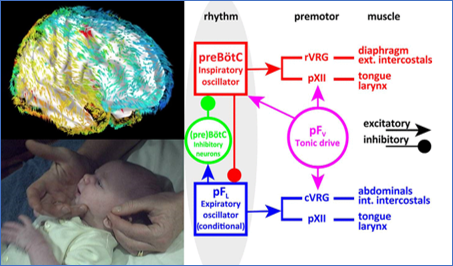
- Teacher: Caroline Stone
THE FULL NEW AND REVISED PAEDIATRICS SERIES - INCLUDING MUSCULOSKELETAL AND SYSTEMIC / VISCERAL AND DEVELOPMENTAL ISSUES FROM INFANTS TO ADOLESENTS
This is a series of 15 lecture modules plus many other resources and videos, offering over 30 hours of evidence based clinical relevant education and osteopathic concepts, including practice guidance and technique commentaries.
This course covers a wide range of things, including birth dynamics, bonding, breastfeeding, infant settling and sleep, development, reflexes, learning and motor sensory integration, special senses, hearing, coordination, balance and vision issues. It looks at biomechanics, growth and orthopaedics, osseous dynamics, head shapes, moulding, torticollis, retained reflexes, stress and pain in children, transition physiology in newborns and arousal / sleep dynamics. It consider visceral issues in infants and children, and looks at the changing skeleton and body dynamics over time - through to puberty and beyond.
Gives many insights into common conditions seen in osteopathic clinics and gives a lot of discussion and guidance regarding treatment and care approaches, and roles / boundaries / risks and evidence in support of practice.
WATCH THE VIDEO TO SEE WHAT THIS OPTION CONTAINS. Over 30 hours of lecture videos, other technique videos and explanatory videos and articles, online resources and useful guides and information. ACCESS - INDEFINITE - watch / access all the resources as many time as you like. Please note: if you are a clinic owner and want to buy access for your associates you can have a bulk discount on second and subsequent purchases you buy of the same series. Please contact me directly to organise.
Disclaimer: this course is for healthcare professionals.
CONTENTS IN DETAIL:
This course contains a series of 15 modules; the content of each module is outlined below:
Module 1: Intra-uterine dynamics
This module consists of a 1 hour 27 min lecture
plus:
- downloadable handouts (notes & 28 links for further reading) and an online viewable slideshow of all the powerpoint slides of the lecture
- audio track of lecture
- 3 links to articles for further reading
Module 2: Birth dynamics, initial primitive reflexes
- downloadable handouts (notes & 20 links for further reading) and an online viewable slideshow of all the powerpoint slides of the lecture
- audio track of lecture
- 5 links to articles and extra resources
Module 3: The dynamic cranium and issues for assessment of the head and body
- downloadable handouts (notes & 15 links for further reading) and an online viewable slideshow of all the powerpoint slides of the lecture
- 3 links to articles for further reading
Module 4 : Maturity, autonomics, physiology, homeostasis
This module contains a 2 hour 34 min lecture plus a 10 min video of a talk through and discussion on Meconium evacuation. In addition there are 5 extra videos totalling approximately 30 min of viewing time.
plus:
- downloadable handouts (notes & 32 links for further reading) and an online viewable slideshow of all the powerpoint slides of the lecture
- 9 links to articles and extra resources for further reading
Module 5 : Arousal, sleep, communication and bonding, implications for motor tone
- downloadable handouts (notes & 47 links for further reading) and an online viewable slideshow of all the powerpoint slides of the lecture
- 3 links to articles and resources for further reading
Module 6: Infant pain and unsettledness
This module contains a 1 hour 30 min lecture, plus a 1 hour 15 min supplementary video
- downloadable handouts (notes & 37 links for further reading) and an online viewable slideshow of all the powerpoint slides of the lecture
- 7 links to articles and resources for further reading
Module 7: Infant suck and latch, breastfeeding issues and tongue tie
This module consists of a lecture in 2 parts; part 1: 2 hours 30 min & part 2: 2 hours 44 min plus approximately 3 min of extra supplementary videos.
plus:
- an online viewable slideshow of all the powerpoint slides of the lecture (part 1 & 2)
- 6 links to articles and resources for further reading
Module 8:Infant ‘colic’, visceral dynamics in babies and toddlers, EENT and immunity
This module consists of a 3-part lecture; part 1: 4 hour 8 min, part 2: 1 hour 27 min, part 3: 2 hour 11 min. In addition there are 3 supplementary videos totalling 13 min viewing time. Plus 2 technique videos.
plus:
- downloadable handouts (notes & 90+ links for further reading) and an online viewable slideshow of all the powerpoint slides of the lecture
- 7 links to articles and resources for further reading
Module 9: Head shapes, moulded babies, torticolis and hips
This module consists of a 3 hour 7 min lecture plus 3 extra supplementary videos with a toalviwing time of 18 min. In addition there are 2 technique videos totalling 6 min viewing time.
plus:
- downloadable handouts (notes & 30 links for further reading) and an online viewable slideshow of all the powerpoint slides of the lecture
- 3 links to articles and resources for further reading
Module 10:Development of structure, motor-sensory integration, general assessment of MSS
A module containing a 2 part lecture; part 1: 2 hour 55 min, part 2 : 2 hour 12 min. Plus 4 extra supplementary videos with a total viewing time of approximately 12 min.
plus:
- downloadable handouts (notes & 75 links for further reading) and an online viewable slideshow of all the powerpoint slides of the lecture
- 8 links to articles and resources for further reading
- downloadable handouts (notes & 15 links for further reading) and an online viewable slideshow of all the powerpoint slides of the lecture
- 6 links to articles and resources for further reading
Module 12: Learning and development, language, emotional, social and communication issues
This module contains a 3 part lecture; part 1: 1 hour 25 min, part 2: 1 hour 28 min, part 3: 1 hour 10 min
- downloadable handouts (notes & 20 links for further reading) and an online viewable slideshow of all the powerpoint slides of the lecture
- 2 links to articles and resources for further reading
Module 13 :Body changes over time. The body cavities, viscera, puberty, body image, mental health
This module contains a 3 part lecture; part 1 : 33 min, part 2: 1 hour 37 min, part 3: 1 hour 25 min
- downloadable handouts (notes & 36 links for further reading) and an online viewable slideshow of all the powerpoint slides of the lecture
- 4 links to articles and resources for further reading
Module 14: EENT and Visceral dynamics in the older child
This module consists of 2 part lecture; part 1: 1 hour , part 2: 1 hour in addition to 2 supplementary videos with a total viewing time of 90 min.
- 7 links to articles and resources for further reading
Module 15: Sports and orthopaedics, and other broader issues.
This module consists of a 40 min lecture plus 2 additional videos of 53 min total viewing time.
- 5 links to articles and resources for further reading

- Teacher: Caroline Stone
This is a 2 part lecture on a wide variety of considerations for osteopaths and similar healthcare professionals looking for insights into the hands on care of mums and baby with feeding difficulties. This covers frequently occurring issues for mother-infant dyads, and looks at anatomy, stress, impact of birth strain, and other factors. Looks at some biomechanical factors, some breast and milk supply factors, and looks at the mother-infant communication and impact of distress, autonomics and infant arousal issues. This covers the basics and gives a good grounding for those wanting to explore care of mums and their babies.
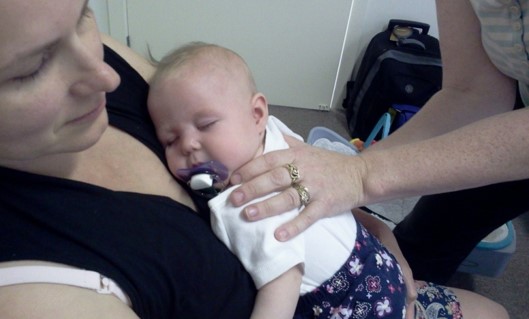
THIS COURSE GOES BEYOND THE FULL PAEDS SERIES.
IF YOU DID THAT COURSE, WHICH INCLUDES SOME BREASTFEEDING AD INFANT FEEDING, BUT WANT MORE INFORMATION, THEN THIS IS THE COURSE.
THIS COURSE IS DESIGNED TO EXTENSIVELY COVER MANY ISSUES IN MUCH GREATER DEPTHS FOR INFANT FEEDING, TONGUE TIE, ORAL FUNCTION, STOMATOGNATHIC SYSTEM AND SO ON, IT HAS MANY MANY HOURSE OF LECTURES, RESEARCH, EVIDENCE DISCUSSIONS, PHYSIOLOGY, NEUROSCIENCE AND CLINICAL INSIGHTS.
This extended and updated course is aimed at osteopaths who have a strong interest in supporting the mother-infant dyad, and families and mums who are struggling with feeding their babies in some way, or with babies who are not establishing feeding.
Osteopaths have many special skills to apply in a clinical context, at this critical time - with babies often just days or weeks old.
Understanding the development of the infant, the transition phase and perinatal dynamics, how primitive reflexes are related to feeding success and how the anatomy of the head, neck, face and body interact with the emergent physiology of suck-swallow-breathe is also essential.
What is also important is to appreciate how birth, tissue irritation, strain, injury to both MUM and BABY can impact on feeding success by causing sensory motor challenges, stress within the arousal and state regulation mechanisms within the infant, and movement and motor challenges within the infant as this then helps osteopaths and similar hands-on practitioners determine a treatment plan or a referral pathway.
Mum also needs particular support, and issues for her involve recovery from birth, bonding and mental health issues, breast-care and milk supply and general restoration of body posture and global cavity restoration.
This course leads into a particular consideration of risks ethics, roles boundaries, consenting and evidence all of which need to be carefully considered when working with this special group of people.
Assessment techniques and approaches for hands on care are discussed. Please note that technical competence cannot be gained from an online programme and so this course cannot credential you for competence on its own.
If you wish to take your training further after completing this course, please contact the College of Non Musculoskeletal Osteopathy (www.cnmo.co.uk) where programmes that lead to a Certificate and can include practical sessions and clinical observation and practice are available in the near future.
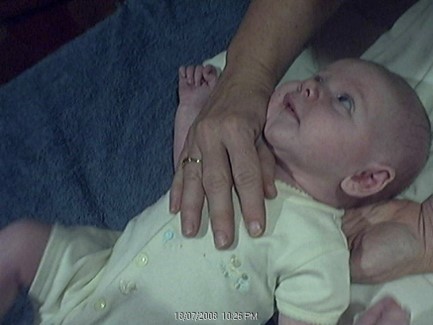
- Teacher: Caroline Stone
About this webinar
There are endless examples of exercises to 'remedy' so called 'retained' primitive reflexes. But, are these reflexes really just movement based? How can certain muscle movements cause fear to recede, or breathing to change, or focus at school to improve? What is really going on? This talk gives you some more information 'behind the scenes' of the usual primitive reflex rehabilitation story.
It is a companion webinar to another in my Neurodevelopmental Series - "Rhythm and Oscillations in Osteopathy - Neurodevelopment and Infant Feeding" in which can now be purchased as a recording on my website: osteobitesize.com
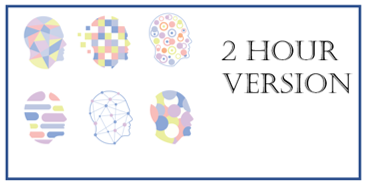
About this event
There are endless examples of exercises to 'remedy' so called 'retained' primitive reflexes. But, are these reflexes really just movement based? How can certain muscle movements cause fear to recede, or breathing to change, or focus at school to improve? What is really going on? This talk gives you some more information 'behind the scenes' of the usual primitive reflex rehabilitation story.
It is a companion webinar to another in my Neurodevelopmental Series - "Rhythm and Oscillations in Osteopathy - Neurodevelopment and Infant Feeding" in which can now be purchased as a recording on my website: osteobitesize.com
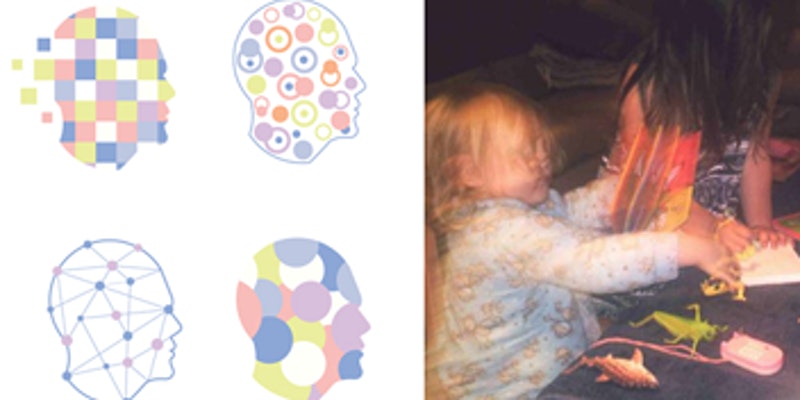
THIS USES SOME OF THE SAME MODULES AS THE FULLPAEDS SERIES, SO THE MIDDLE THIRD OF THAT FULLPAEDS SERIES LOOKS AT DECVELOPMENT AND REFLEXES, AND IS INCLUDED HERE. SOME OSTEOPATHS WISH TO LOOK AT DEVELOPMENT, IN THE OLDER CHILD, WITHOUT HAVING TO EXPLORE THE CARE OF INFANTS. IN WHICH CASE THIS SHORT COURSE IS IDEAL. IT GIVES AN INTRODUCTION TO THIS, WITHOUT ALL THE OTHER PAEDS SERIES INFO.
IF YOU WANT TO GO INTO MUCH GREATER DETAIL ABOUT NEURODEVELOPMENT, IMPLICATIONS FOR NEURDIVOERSITY, ETC, THEN YOU CAN FOLLOW THIS SHORT COURSE WITH THE MORE EXNTESIVE 'NEURODEVELOPMENT AND PRIMITIVE RELFEXES' PROGRAMMES, WHICH COVER THIS MATERIAL FRMO A WIDER RANGE, AND A DEEPER PERSPECTIVE, GIVING AN NEHANCVED UNDERSTANDING OF THE CHALLENGES TO NORMAL DEVELOPMENT, HOW TO CONSIDER THE REFLEX STORY, AND HOW TO HAVE AN OSTEOPATHIC APPROACH WITHIN DEVELOPMENT AND DIVERSITY
This is an overview course, from a neurodevelopmental, neurophysiological, neuroceptive and somatoemotional perspective. It goes through various primitive reflexes in the content of child development, not just for motor and movement development, but emotional, language and affective development, from babies through to children. This course also though, gives an overview / introduction to arousal, autonomic tone, sensory motor integration, reflexes and their place, and testing and rehabilitation overview. The content is derived from two specialised modules in the full paediatrics course. This is a really good grounding for clinical practice from an osteopathic perspective.
Please note, the full Neurodevelopment, Primitive Reflexes and Neurodiversity Course, which is also available, expands on this content hugely, and gives much more guidance in terms of practice evidence and research in support of an osteopathic and manual therapy role in this field of care.

- Teacher: Caroline Stone
This course builds on the content within the paeds series but now goes much further It integrates many aspects and gives clear direction for a wide variety of issues, for testing, evaluating, integrating care pathways, for appreciating the lived experiences of people and how to apply osteopathic care perspectives from many angles - including vagal autonomics, balance, vestibular, kinaesthetic, vision, proprioceptive, interoceptive, visceral, microbial, respiratory and sleep dynamics. A whole body and whole person approach for these with retained reflexes and other neurosensory processing dynamics, developmental considerations and more.
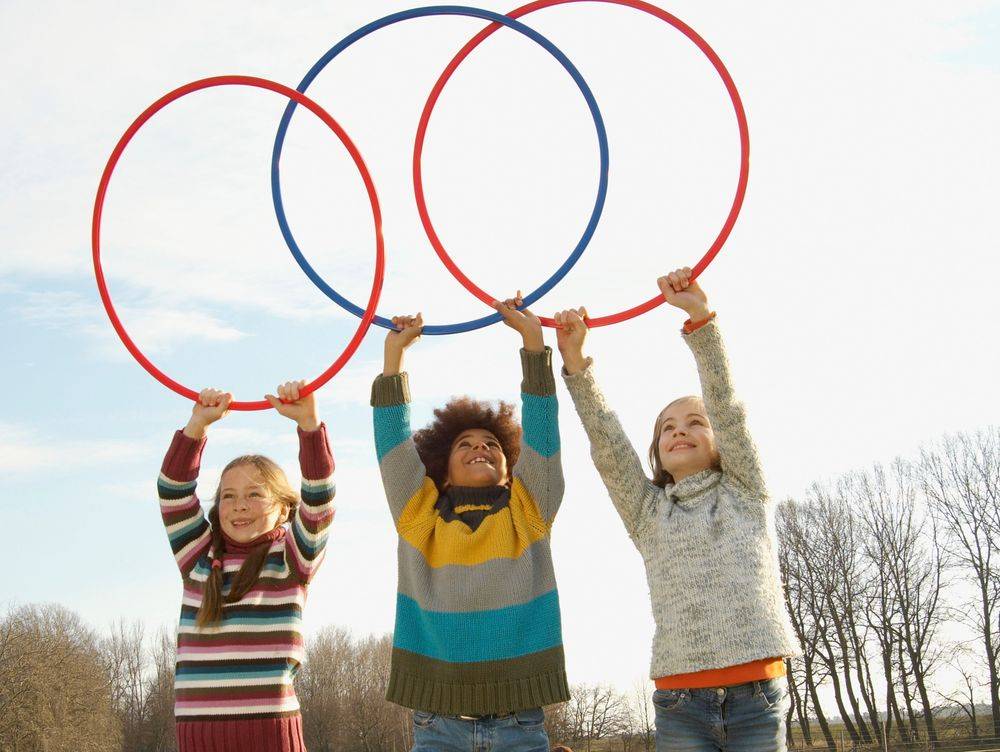
Detailed and critically appraised consideration of osteopathic approaches and evidence in complex and chronic pelvic pain. 10 sessions to explore how manual approaches are relevant across a range of problems such as endometriosis, bladder dyssynergia, pelvic prolapse, adhesions, inflammatory problems, scars, post partum injuries, post surgical and more. Understand pain perception, trauma dynamics, social and emotional considerations and more.
Pre recorded lecture and series in complex and chronic pelvic pain. | ||
| ALL LECTURES ARE BETWEEN ONE AND TWO HOURS EACH. | ||
Some additional articles and online resources are listed alongside some lectures, for added interest. Each lecture contains links for many refences and you can follow each evidence link via the handouts and the slideshow that accompanies each video. The videos cover osteopathic concepts, approaches and patient management, but do not include technique videos in this overview. | TO ACCESS VIDEOS OF TECHNIQUES ( A SEPARATE PRODUCT) YOU NEED TO BELONG TO THE WHOMBS MEMBERSHIP AREA, WHICH IS IN DEVELOPMENT. MORE INFORMATION COMING IN DUE COURSE. | |
| Modules | Indicative content | |
| 1) LECTURE ONE | Complexity in cavity dynamics, motor planning, abdominopelvic pressures, fluids and effects on physiology and inflammation | |
| 2) LECTURE TWO | Developmental dynamics, consequences of endocrine and autonomic dysregulation of overtime – relevance for pelvic pain | |
| 3) LECTURE THREE | Social engagement, the poly vagal systems, pelvic parasympathetics and plexi, disentangling emotions, sexual interactions and tissue states | |
| 4) LECTURE FOUR | Pain perceptions, pain and illness behaviours, trauma dynamics, reducing vigilance and improving agency | |
| 5) LECTURE FIVE | Considering organ movements in micturition and defaecation, integration of the pelvic floor and how problems arise. Bladder and bowel considerations | |
| 6) LECTURE SIX | Endometriosis, pathologies gynae system, surgeries, consequences | |
| 7) LECTURE SEVEN | Inter-organ dynamics, postsurgical, adhesions, management of the peritoneum, viscero-somatic reflexes | |
| 8) LECTURE EIGHT | Pelvic floor and coccydynia problems, high tone and dyssynergia problems, and complex childbirth related problems | |
| 9) LECTURE NINE | Organ support and prolapse management | |
| 10) LECTURE TEN | Consenting, communication, risk management, limitations to care, health and hygiene, practice management considerations | |
- Teacher: Caroline Stone
This is a fabulous, extensive CPD series, with many hours of lectures and resources. It is part of the various 'CPD' components of the cnmo.co.uk qualification in osteopathy and women's health.
There are several courses into the topic of 'women's health' you can take with Osteobitesize, and this one, Journeying, is designed to go through from puberty and the transition from being a girl to a woman, through ones female world and lifespan, and through many health challenges and also menopause and beyond. It doesn't specifically include obstetrics and post partum, which is covered in a separate course, and doesn't include a description of internal techniques, which are covered elsewhere, but still gives much insight into how women function, the problems they can face and
This particular course does not cover the complexities of gender informed practice, nor does it include discussion of trans, gay, gender fluid, and issues of concern to those who do not identify as 'woman'. My intention is to cover those important dynamics in a new forthcoming programme.
This particular course IS for all though, including women, and is about women.
CONTENTS IN DETAIL:
This course contains a series of 13 modules plus a series of Technique videos at the end of the course. The content of each module is outlined below:
Module 1: General lifespan issues - this gives a general perspective on issues across the lifespan
This module consists of a 4 -part lecture: Part 1: 1 hour, Part 2: 1 hour 33 min, 1 hour 27 min, Part 4: 42 min
plus:
- downloadable handouts ( lecture notes with 26 links to articles/resources for further reading) and an online viewable slideshow of all the powerpoint slides of the lecture.
Module 2: Body compartments - whatever the 'problem' it is important to treat the whole person, and this starts with understanding the body compartment integration
This module consists of a 5-part lecture : Part 1: 1 hour 10 min, Part 2: 1 hour 26 min, Part 3: 52 min, Part 4: 1 hour 18 min, Part 5: 17 min
plus:
- downloadable handouts ( lecture notes with 5 links to articles/resources for further reading) and an online viewable slideshow of all the powerpoint slides of the lecture.
Module 3: Connective tissues in women and other endocrine considerations - this section is to inform your understanding of tissues, and by extension examination and 'treatment'
This module contains a 1 hour 27 min lecture.
- plus:
- 2 links to articles for further reading
Module 4: Pains, organ problems, being 'traumatised', balancing autonomics - now we have a broad perspective, we can appreciate that as many 'problems' involve pain and inflammation, we need to cover this topic
This module consists of a 1 hour 47 min lecture plus a supplementary video of 17 min.
plus:
- 3 links to articles/resources for further reading
Module 5: Visceral pain, microbiome, immunity, fluids and lymphatics - this continues our understanding of physiology, homeostasis and allostasis - all of which is relevant across the breadth of women's health issues
This module contains 2 videos of 15 min and 1 hour 39 min plus a visceral pain lecture.
plus:
- 7 links to articles/resources for recommended reading
Module 6:Pelvic Floor, organs and cavities - now we can begin to revisit areas of the body, and focus in more detail - an important place to understand well is the pelvis
This module consists of 5 lectures: lecture 1: 1 hour 32 min, lecture 2: 1 hour 43 min, lecture 3: 13 min, lecture 4: 1 hour 43 min, lecture 5: 28 min
plus:
- downloadable handouts ( lecture notes only) and an online viewable slideshow of all the powerpoint slides of the lectures.
- 3 links to articles/resources for further reading
Module 7:Body changes over time, puberty, body image, mental health - it is important to contextualise physiological changes over time, especially for a sense of self.....
This module contains a 3-part lecture: Part 1: 33 min, Part 2: 1 hour 37 min, Part 3: 1 hour 24 min
plus:
- 1 link to an article for further reading
Module 8:Women in osteopathic practice - this is a slight diversion in that it relates to women as practitioners as well as women in need of carers
This module contains a 57 min video
plus:
- 1 link to an article for further reading
Module 9: Breast cancer commentary - as the lifespan continues, so do its health challenges - here is one example
This module consists of a 55 min lecture.
Module 10: Hormones and fertility issues - again, another challenge and one where the contribution of manual care is not often articulated
Module 11:Other videos - useful in general
This module contains a commentary by Caroline Stone on a selection of videos.
Module 12: Menopause
This module contains a 2-part lecture: Part A: 16 min, Part B: 1 hour 10 min, plus an additional lecture of 55 min.
plus:
- downloadable handouts ( lecture notes only) and an online viewable slideshow of all the powerpoint slides of the lectures.
Technique videos
This section contains a 5 technique videos with a total viewing time of approximately 9 min.

- Teacher: Caroline Stone
This new course combines the ever popular paediatrics series with the obstetrics and post partum course. Its not quite 2 whole separate courses put together, but it contains all the obs and post partum, and around half of the paeds series. Accordingly the price is adjusted reflects the extensive content but still cheaper than buying the 2 programmes separately. This is a huge resource for all things mum and bub, and looks at a whole range of osteopathic approaches and concepts for the care of mum through pregnancy, pain, movement and posture, general pregnancy ailments and problems, preparation for labour and delivery, post partum care, recovery from tissue injury and returning to function, breastfeeding and settling into the new family role and dynamics.. For both it covers the materno-foetal interaction and which is so important - showing how their journey together through pregnancy, birth and beyond sets the scene for some many 'presentations'. For the babies it covers infant birth trauma, infant pain, unsettledness, autonomics, arousal, moulding, intraosseous strain, movement dynamics, neurosensory integration, feeding, ears, breathing, digestion, development, motor coordination, growth, red flags, risk assessment, examination and treatment considerations and loads more. Long term access to online resources.
***************************
This extended and updated course is aimed at osteopaths who have a strong interest in supporting the mother-infant dyad, and families and mums who are struggling with feeding their babies in some way, or with babies who are not establishing feeding.
Osteopaths have many special skills to apply in a clinical context, at this critical time - with babies often just days or weeks old.
Understanding the development of the infant, the transition phase and perinatal dynamics, how primitive reflexes are related to feeding success and how the anatomy of the head, neck, face and body interact with the emergent physiology of suck-swallow-breathe is also essential.
What is also important is to appreciate how birth, tissue irritation, strain, injury to both MUM and BABY can impact on feeding success by causing sensory motor challenges, stress within the arousal and state regulation mechanisms within the infant, and movement and motor challenges within the infant as this then helps osteopaths and similar hands-on practitioners determine a treatment plan or a referral pathway.
Mum also needs particular support, and issues for her involve recovery from birth, bonding and mental health issues, breast-care and milk supply and general restoration of body posture and global cavity restoration.
This course leads into a particular consideration of risks ethics, roles boundaries, consenting and evidence all of which need to be carefully considered when working with this special group of people.
Assessment techniques and approaches for hands on care are discussed. Please note that technical competence cannot be gained from an online programme and so this course cannot credential you for competence on its own.
If you wish to take your training further after completing this course, please contact the College of Non Musculoskeletal Osteopathy (www.cnmo.co.uk) where programmes that lead to a Certificate and can include practical sessions and clinical observation and practice are available in the near future.
CONTENTS IN DETAIL:
The course contains a series of 33 modules, and the content outline for each of these is:
Module 1 : Overview of latch, suck and swallow
This module contains a 33 minute lecture on latch, suck and swallow - an overview. It also contains a 2 minute youtube video on tongue movements, a 33 minute youtube video on Breastfeeding Self-Efficacy and LATCH Assessment.
plus:
- downloadable handouts (notes only) and an online viewable slideshow of all the powerpoint slides of the lecture.
Module 2: Movement and anatomy integration - smooth and rhythmic suck and swallowing
A module containing a series of resources, videos, articles, and links on the movement and anatomy integration of smooth and rhythmic suck and swallowing. Specifically: 20 sec video on normal swallowing in infants: 3 min video on fluoroscopic Swallowing Study; 30 sec video on Breastfeeding Ultrasound real time; 40 sec infant feeding video; 30 min video on a guide to Breastfeeding;
plus:
- a downloadable article
This module contains no lecture but is for supplementary orientation: contains one short 2 min video on the different types of suck patterns and poses questions that will be explored in later modules.
Module 4: Nutrition, metabolism, appetite - how the infant guides the feeding dynamic, plus other approaches to feeding
This module looks at maternal, infant and early childhood nutritional needs and the nutritional components of breastmilk as well as other alternative feeding methods. There is no lecture in this module but a series of videos that include: 1 hour video on Maternal, Infant and Early Childhood Nutrition; 1 hour 20 min video on the chemistry of infant feeding; 3 min video on Syringe feeding; 40 sec video on cup feeding.
plus:
- a downloadable article
Module 5: Airflow and airway protection
This module contains a video link and discussion on how repositioning the chin-nose-breast relationship allows more airflow.
plus:
- 2 downloadable articles
Module 6: Tensor veni palatini and the airway dilators
This module covers a lot of the relevant anatomy, and gives orientation to palpatory experiences during assessment and treatment. Video resources include: 25 min video on Anatomy of the soft palate
Module 7: Upper cervical spine dynamics, and the dural tube - combining spinal column and dural dynamics, with visceral tube and sliding surfaces in the throat / ventral fascias
This module contains no lecture but is for supplementary orientation
Module 8: Future changes to suck and swallow - the implications for speech and communication
This module includes 3 downloadable articles
Module 9: Intra-uterine dynamics
A module containing a 50 min lecture on Breastfeeding and Infant feeding -support for Osteopaths-Mother and Infant dynamics. Extra videos include a 40 sec video Ultrasound sucking baby, a 1hr, 4min video by Dr Jack Newman on infant feeding, latch, milk flow, biological nursing and the breast crawl.
plus:
- downloadable handouts ( lectures notes & 10 links for further reading) and an online viewable slideshow of all the powerpoint slides of the lecture.
- 2 links to extra resources
Module 10: Where do I go next? - birth dynamics
- downloadable handouts (lecture notes & 9 links for further reading) and an online viewable slideshow of all the powerpoint slides of the lecture.
- link to supplementary article
Module 11: The dynamic cranium, birth trauma
This module contains a 1 hour 12 min lecture from the breastfeeding series: dynamic cranium.
plus:
- downloadable handouts (lecture notes & 6+ links for further reading) and an online viewable slideshow of all the powerpoint slides of the lecture.
- a slideshow on vacuum delivery
- downloadable article
Module 12: The moulded baby syndrome - osseous and sensory motor implications
This module contains a 2 hour lecture from the breastfeeding series: the moulded baby.
plus:
- downloadable handouts (powerpoint notes & +6 links for further reading) and an online viewable slideshow of all the powerpoint slides of the lecture.
- 4 links to articles for further reading
Module 13: Head shapes and other moulding and movement dynamics
There is no separate lecture in this module .
There are 2 links to resources support the module content
Module 14: Motor sensory development, the somatic and physiological bodies, primitive reflexes, patterns and rhythms, the self, and infant feeding
There are 2 lectures in this module: Motor Sensory Development for Feeding Success part 1 (1 hour 45 min)and part 2 (1 hour 30 min)
plus:
- downloadable handouts ( lectures (part 1 & 2) notes & 30+ links for further reading ) and an online viewable slideshow of all the powerpoint slides of both lectures
- links to 3 articles for further reading.
Module 15: Bonding, communication, social engagement, development and poly-vagal perspectives, oxytocin, neurohumoral and microbiome issues
- downloadable handouts (notes to lecture & 30+ links for further reading) and an online viewable slideshow of all the powerpoint slides of both lectures
- 7 articles for downloading
- downloadable handouts (powerpoint notes & 16 links for further reading) and an online viewable slideshow of all the powerpoint slides of the lecture.
- 8 articles to download
Module 17:Suckling is a vestibular friend! And other aspects of vestibular integration of suck-swallow-breathe
In this module there is no separate lecture - just some additional resources:
- 3 links to articles
Module 18: Eyes
In this module there is no separate lecture - just some additional resources:
- 3 links for further reading
Module 19: Other rhythms - sleep and circadian dynamics
This module contains a 7 min video.
Module 20: Pain, sensitisation, destabilisation, shock, stress, fear
This module contains 1 lecture of 1 hour 8 min . In addition there is a 1 hour 15 min video to watch.
plus:
- downloadable handouts (lecture notes & 50+ links for further reading) and an online viewable slideshow of all the powerpoint slides of the lecture.
- 3 downloadable articles
Module 21:Developmental anatomy, and implications for function and evaluation - the anatomy of suck
This module contains a combined lecture of 2 parts: Part 1 - (2 hours)The Anatomy of suck; Part 2-The other end of swallowing breathe (1 hour 8 min).
plus:
- downloadable handouts (notes forepart 1 & 2 of lecture + links to11 resources for further reading) and an online viewable slideshow of all the powerpoint slides of the lecture.
- links to 6 articles plus 1 slideshow
Module 22: What about the rest of the gastro-intestinal tract and swallowing / breathing?
This module contains 1 downloadable article
Module 23:Tongue tie
This module contains 1 lecture of 1 hour 21 min in addition to a 4 min 30 sec video & a 5 min video on the embryology of the mouth and throat and tongue, plus a 2min video on aftercare post-frenotomy.
plus:
- 4 links to articles for further reading
Module 24: Suck training and other rehabilitations
This module contains a 4 min 30 sec video
plus:
- 1 downloadable article
Module 25:Maternal dynamics - being on the other side of the mouth
This module contains 1 lecture of 2 hours 45 min.
Module 26: Milk letdown and milk ejection, breasts, nipples and mum
There is no separate lecture in this module
Module 27: Nipples, teats, shields, nipple pain, and the view from mum's side of the tongue....
There is no separate lecture in this module.
Additional resources include:
- 3 downloadable articles
- link to slideshow
Module 28:Osteopathic support
- 2 downloadable articles
Module 29: Assessing, and treating upright
There is no separate lecture for this module.
Module 30: Accessing the cranial nerves
This module contains 2 videos of 12 min and 10 min.
Module 31 :Where ANATOMY TRAINS and TENSEGRITY models (including the dural reciprocal tension model) don't go far enough.
This module contains 1 lecture
Module 32:Co-regulation - the role of the therapist (all therapists)?
This module contains 3 videos: 3 min 30 sec; 4min 40 sec; & 2 hours.
Module 33: Assessment tools
There is 1 lecture in this module
plus:
- 2 downloadable articles.
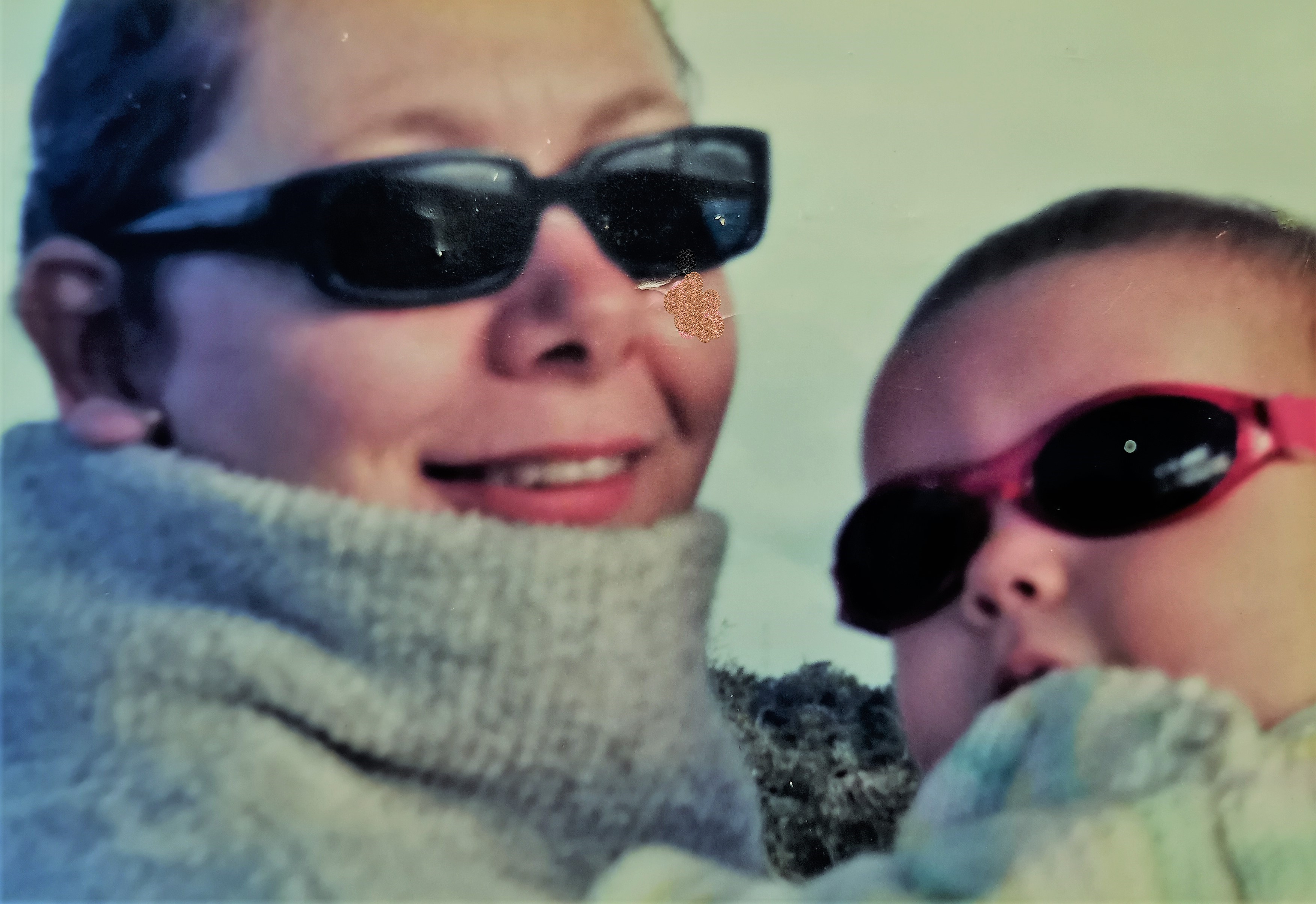
This is a great course that covers osteopathic approaches and concepts for helping pregnant women on their journey, and through the peri-and post-partum periods. It includes breastfeeding and bonding dynamics, and has a huge focus throughout on materno-foetal interaction and the implications this has for optimal foetal positioning, maternal pain and posture, infant behaviors and development, post partum recovery mental health, breastfeeding and more. It covers the biomechanics of pregnancy, other dynamics of pregnancy, reviews the 'ligament theory of foetal positioning' and gives enhanced, evidence based fuller visions of the osteopathic approach. Many other factors, such as physiological conditions in pregnancy, risk in pregnancy care and what can and can't be achieved with osteopathy are also discussed, plus lots on the pelvis and pelvic floor, body cavities, rehabilitation, and more. Great all round resource. Examination and assessment protocols are discussed, and some technique videos included.
It is part of the 'CPD' component of the cnmo.co.uk qualification in osteopathy and women's health - which also includes the women's health / journeying series above.
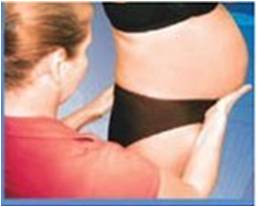
- Teacher: Caroline Stone
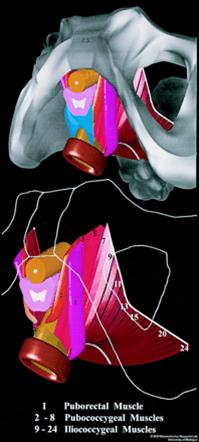
- Teacher: Caroline Stone
PLEASE NOTE THIS IS FOR HEALTH PROFESSIONALS. Introduction to internal techniques per rectum and per vagina - examination talk-throughs plus other guidance on risk management and consenting - online course - 3-5hours of lecture webinar plus resources.
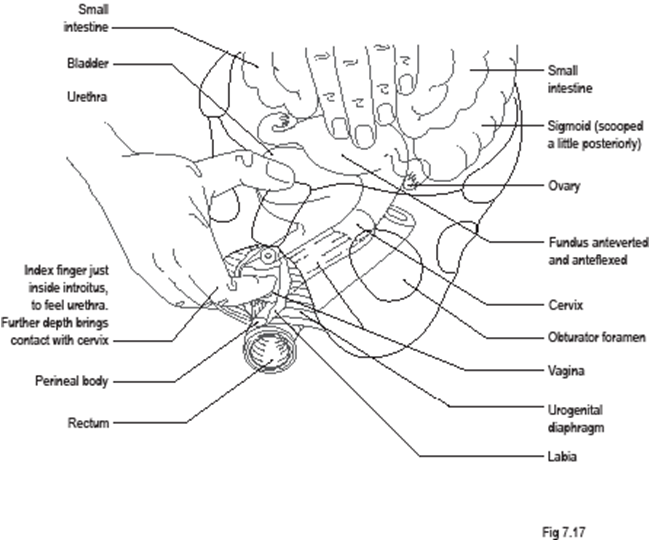
- Teacher: Caroline Stone
- Teacher: Chris Harris
- Teacher: Caroline Stone
This is a series of 12 modules - offering over 30 hours of evidence based clinical relevant education and osteopathic concepts, including practice guidance and technique commentaries.
This course covers all things head and neck - focusing on the TMJ, mouth, face, throat and cranial structures interface. It looks at balance, speech, voice, larynx, respiratory dynamics, thoracic inlet, axillary and chest dynamics.
It also reviews the social engagement system, the vagus and communication, and gives variations on many techniques, including the ventral cervical spine and ventral fascial systems. WATCH THE VIDEO TO SEE WHAT THIS OPTION CONTAINS. Over 30 hours of lecture videos, other technique videos and explanatory videos and articles, online resources and useful guides and information. ACCESS - INDEFINATE - watch / access all the resources as many time as you like. Please note: if you are a clinic owner and want to buy access for your associates you can have a bulk discount on second and subsequent purchases you buy of the same series. Please contact me directly to organise.
CONTENTS IN DETAIL:
This course contains a series of 12 modules; the content of each module is outlined below:
Module 1:Introduction to the stomatognathic system – functional integration and multi system dynamics - why the TMJ can’t be considered in isolation.
This module consists of a 1 hour 54 min lecture on The Stomatognathic System in addition to 2 technique videos of 1 min 26 sec and 4 min 5 sec. Plus a 10 min 30sec video of an over view of headaches.
plus:
- an audio file of the lecture,
- downloadable handouts (notes & 19 links for further reading) and an online viewable slideshow of all the powerpoint slides of the lecture
- 8 extra links to articles and images
Module 2 : Upper cervical spine – alignment and implications for stomatognathic system Myodural bridge and alternative views of the dural dynamics.
This module contains a 2 hour lecture plus 2 technique videos of 2 min 30 sec and 3 min 16 sec.
plus:
- an audio file of the lecture,
- downloadable handouts (notes & 18 links for further reading) and an online viewable slideshow of all the powerpoint slides of the lecture
Module 3: Airflow, airways and pharyngeal spaces. Ears and nose and respiratory consequences. Impacts on breathing and diaphragm.
This module contains a 3 hour lecture and 3 technique videos totalling 10 minutes of viewing time.
plus:
- an audio file of the lecture,
- downloadable handouts (notes & 22 links for further reading) and an online viewable slideshow of all the powerpoint slides of the lecture
- 4 downloadable articles
Module 4: Eyes, balance and head orientation and facial mechanics. Vestibular integration and postural reflexes.
This module consists of a 2 hour 15min lecture plus 1 technique video of 1 min 30 sec.
plus:
- downloadable handouts (notes & 14 links for further reading) and an online viewable slideshow of all the powerpoint slides of the lecture
Module 5: Growth and development, osseous dynamics and periosteum.Pain and trigeminal sensory impacts on vagus.
A module containing a 2 hour 30 min lecture plus 1 technique video of 1 min 16 sec.
plus:
- downloadable handouts (notes & 30+ links for further reading) and an online viewable slideshow of all the powerpoint slides of the lecture
Module 6: Neurodevelopmental considerations. Social engagement systems.Primitive and Primal reflexes introduction.
This module contains a lecture of 2 parts: part 1 is 35 mins and part 2 is 1 hour 20 min.
Plus:
- downloadable handouts (notes & 17 links for further reading) and an online viewable slideshow of all the powerpoint slides of the lecture
Module 7: Torticollis – various perspectives in practice. Intra-uterine and Birth strain, reflex implications, pharyngeal arches.Crossed extensor and withdrawal responses in infant.
This module consists of a lecture of 1 hour 8 mins
plus:
- downloadable handouts (notes & 24 links for further reading) and an online viewable slideshow of all the powerpoint slides of the lecture
Module 8: Swallowing and oral motor dynamics.From infants to older children, including tongue ties and their myofascial considerations.
This module contains a 1 hour 50 min lecture plus 2 technique videos of 1 min 15 sec & 3 min 12 sec. In addition there are some additional videos to explain swallowing totalling 18 min of viewing time.
plus:
- downloadable handouts (notes & 6 links for further reading) and an online viewable slideshow of all the powerpoint slides of the lecture
Module 9: Speech and auditory dynamics – moulding in the oral cavity. Motor sensory development, inc motor patterning and sequencing – inc cerebellum and processing. Language, learning and development integration.
This module contains a 2 hour 20 min lecture plus a 1 min technique video
plus:
- downloadable handouts (notes & 2 links for further reading) and an online viewable slideshow of all the powerpoint slides of the lecture
Module 10 : Laryngeal mechanics and voice considerations. Hyoid and tongue placements.
This module consists of a 2 hour lecture plus 2 videos totalling 6 min of viewing time on exploring the voice in action.
plus:
- downloadable handouts (notes & 4 links for further reading & exploration) and an online viewable slideshow of all the powerpoint slides of the lecture
- plus 1 link to a resource on voice sounds.
Module 11: TMJ mechanics, Discs and pterygoids.
This module consists of a 1 hour 30 min lecture plus 2 short videos (under 1min) on disc movement.
plus:
- downloadable handouts (notes & 3 links for further reading & exploration) and an online viewable slideshow of all the powerpoint slides of the lecture
- 2 extra resources for extensive reading and exploration
Module 12: Global cervico-brachial and mediastinal link.Thoracic inlet and axillary / upper limb integration with head and neck.
This module contains a 1 hour 40 min lecture plus 2 technique videos totalling 8 min of viewing time.
plus:
- downloadable handouts (notes & a links for further exploration) and an online viewable slideshow of all the powerpoint slides of the lecture

- Teacher: Caroline Stone
- Teacher: test student
VISCERA REVISITED
WITH CAROLINE STONE D.O.(Hons), MSc(Ost), MEd, MClinEd
GET BACK TO THE BASICS OF ANATOMY, PHYSIOLOGY AND TECHNIQUE, AND LEARN HOW TO REALLY APPLY THINGS IN YOUR PRACTICE. (Please note, this course will be your gateway into the 2 other larger courses that Caroline offers on visceral work and osteopathic medicine - namely the 'Visceral Basics' and the 'Global Visceral' Series).
Go beyond your undergraduate experience and get insights into clinical applied approaches.
10-SESSIONS, 2-HOUR LIVE WEBINAR SERIES, THAT COVERS ALL THE DETAILS TO INTRODUCE THESE DYNAMICS, RECAP AND REORIENT YOUR PRACTICE.
Suitable for osteopaths, chiropractors and physiotherapists who wish to explore visceral and fascial/vascular dynamics in practice, within their own paradigm.
LEARN FROM ONE OF THE WORLD’S BEST-KNOWN ‘VISCERAL OSTEOPATHIC TEACHERS’
£180 for all 10 sessions, starts October, and runs through to July, delivered approx. fortnightly, and is recorded if you can’t make the live broadcast. Sessions include Q and A with Caroline. Delivered on Thursdays at 7pm UK time.
Session dates:
- 20 Oct 2022
- 17 Nov
- 15 Dec
- 19 Jan 2023
- 2 March
- 23 March
- 4 May
- 1 June
- 29 June
- 6 July
Session topics:
- What is ‘visceral’? – why ‘techniques’ are not enough in practice. Understanding the body cavities, and their role in motor planning and interoception
- Layers and sliding surfaces in the abdomen – working through the muscles, fluids and organs, basic locations and what hinders palpation and what really can be identified
- Upper gastrointestinal dynamics
- Lower digestive tract dynamics
- Retroperitoneal organs, including renal and endocrine systems
- Endocrine immune systems continued
- Cardiorespiratory dynamics
- Visceral-vascular considerations
- The global pelvis – male and female
- Neural systems and the autonomics relevant for visceral dynamics
From this programme you will get:
Anatomy review, taking you from a beginner to a higher level of knowledge
Understanding the link between body movement and fascial dynamics with visceral function and interoception
Understanding the complexities of working with the viscera and peritoneal and other serous structures of the torso
Understanding how the body cavities work, how pressure dynamics are relevant
Focused awareness of the different visceral systems: upper digestive tract; lower digestive tract; upper urinary tract and retroperitoneal dynamics; lower urinary tract, and uro-genital dynamics, male and female; endocrine immune systems; vascular systems; neural systems including the autonomics and the CNS;
The course will discuss hands-on approaches and review a range of techniques and palpatory dynamics.
This course sets you on a strong learning path for taking advanced courses once you are more confident!
This course is delivered over zoom. You will get access to the recording afterwards. If the course does not appear in your 'my courses' section, please don't worry, we will be in touch via email to organise links / access.
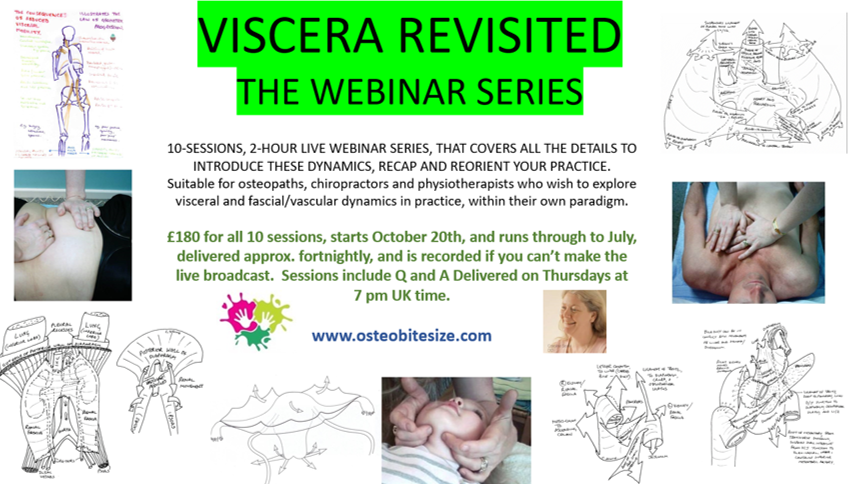
This course really builds on the visceral basics - getting you to understand many aspects of visceral pain, vagal dynamics, mindfulness, breathing, body mapping and problems with scars and adhesions. It helps you appreciate all the adjuncts and approaches necessary when dealing with a variety of visceral dynamics and begins to illustrate how to approach some visceral conditions . help in their management. It goes into many aspects of the osteopathic medicine approach, looks at potential for healthcare contribution across a range of healthcare presentations, and despite the fact that osteopaths 'look for health, not disease' it is still vital to understand the science behind complex health challenges and how physiology and homeostasis, movement and anatomy all converge to enable the person to function at their best.
CONTENTS IN DETAIL:
This course contains a series of 34 modules; the content of each module is outlined below:
Module 1: Osteopathic Medicine
This module consists of 2 videos; video 1 is 1 hour 22min , video 2 is 1 hour 30 min.
plus:
- 2 articles for study & reflection
Module 2: Fluid versus neural circuitry - more comments about 'CHEMICAL' BARRIERS
This module contains 3 videos with a total viewing time of approximately 1 hour 50 min
plus:
- 2 links to articles for further reading
Module 3: Wider perspectives!
This module contains 2 videos with a total viewing time of approximately 2 hours.
Module 4: Exchange and metabolism - cardiorespiratory interface, breathing and airflow and dynamics of arousal / sleep
This module consists of three lectures; lecture 1 is on the Upper airway spaces (3 hours), lecture 2 is on the lower respiratory tract, the cardiorespiratory interface and the metabolism with respiration and exchange( 2 hours 44min), lecture 3 is on the Vagus & sympathetic & parasympathetic integration (2 hours 48 min). In addition, there is one technique video (3 min 21 sec) plus 5 supplementary videos with a total viewing time of approximately 45 min.
plus:
- downloadable handouts for lectures 1, 2 & 3 (notes & 30+ links for further reading) and an online viewable slideshow of all the powerpoint slides of each lecture
Module 5: Behavioural state regulation, arousal and sleep
This module consists of 2 lectures; Lecture 1: Arousal and State Regulation is 2 hours 33 min & lecture 2 : Infant behavioural states / States of Consciousness is 2 hour 22min.
Module 6: Nutrition, digestion, assimilation, microbiome
This module consists of 2 videos with a total viewing time of 1 hour 5 min.
Module 7: Metabolic Load and pro-inflammatory State
This module contains 1 link for supplementary reading.
Module 8: More on NEURAL BARRIERS
A module containing a 1 hour 12 min video on visceral pain
plus:
- 4 links to articles and resources for further reading
Module 9: Visceral communication, visceral pain signalling, adjusting visceral function to demands of the whole
This module contains a lecture of 1 hour 47 min in addition to 3 supplementary videos of 15 min, 30 min and 1 hour 40 min.
plus:
- 4 links to articles and resources for further reading
Module 10: The endocrine system and the immune system
This module contains 3 videos with a total viewing time of approximately 2 hours (including one technique video)
plus:
- one link to resource for further reading
Module 11: Neuroendocrine immune interactions including the HPA axis
A module containing 2 videos of I hour and 16 min.
plus:
- 2 links to articles for further reading
Module 12: Interoception, proprioception and exteroception - the developing and internal self through interchanges with the outside world
This module consists of a 3 part lecture: part 1: 33 min, part 2: 1 hour 37 min, part 3: 1 hour 24 min.
plus:
- one link to resource for further reading
Module 13: Stress, the viscera, disease and systemic dysfunction
This module contains no lectures. However there are 9 links to resources for study and reflection.
Module 14: Social Engagement, polyvagal theory, and conflicts within the system-understanding Vagal Tone
This module contains 1 video of 28 min
plus:
- 3 links to articles for further reading
Module 15: Emotions, safety, trauma, stress, chronic illness, pain
This module consists of a 31 min video on the Immune system and Stress plus a recording of a Q&A session on Somatic experiencing and bodywork-1 hour 35 min.
plus:
- 4 links to resources for further reading
Module 16: General Adaption Syndrome and Allostasis, central sensitisation and nervous 'irritability'
This module contains 2 videos of 35 min & 45 min.
plus:
- 1 link to follow for supplementary reading
Module 17: Gerontology and the ageing process
This module contains a 9 min video
plus:
- 2 links to articles for further reading
Module 18: Touch
This module contains a 3 min video
plus:
- 2 links to articles for further reading
Module 19: On scars and skin - our outer layers and their function
This module contains 3 videos with a total viewing time of approximately 50 min.
plus:
- 7 links to extra resources for further reading
Module 20: Co-regulation and manual therapy - including the role of the therapist
This module consists of 4 videos, 2 of which are short (less than 5 min each) and 2 much longer ones of 1 hour 54 min & 1 hour 4 min.
plus:
- a link to an interview on regulation and the polyvagal story.
Module 21: Osteopathy as somato-physiological bodywork
Module 22: How I approach examination and assessment
Module 23: Body scan and 3D assessment
Module 24: 'Physiological' care plans - So, which visceral 'disease' were we talking about?
Module 25: Breathing dysfunction, asthma, other respiratory conditions
This module contains a video talk of 1 hour 30 min
plus:
- 1 link to an article for further reading
Module 26: Dyssynergia - eg bladder, bowel, diaphragmatic, abdominal....
This module contains a link to one resource for further reading
Module 27: Irritable bowel, functional lower GIT disorders
Module 28: Upper GIT conditions
Module 29: Liver and small intestine
Module 30:The urinary system
Module 31: Male pelvic health
Module 32: Female pelvic heath
Module 33: Coccyx and rectum
Module 34:Organs and senses in the head - EENT
This module contains a 22 min short video on balance and sensory integration.
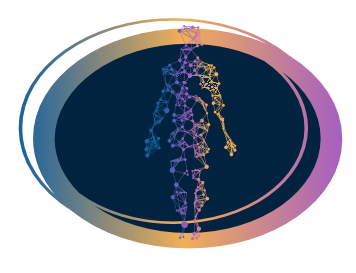
- Teacher: Caroline Stone
LEARN ABOUT VISCERAL OSTEOPATHY, VISCERAL TECHNIQUES, CONCEPTS OF HOW THE BODY CAVITIES WORK, HOW DYSFUNCTION CAN OCCUR AND WHAT WE CAN DO ABOUT IT. Lots of evidence and applied anatomy to illustrate physiological and fluidic concepts as well as the relationships between the musculoskeletal system and the viscera (including the fascia and connective tissues of the body and body cavities). There are lots of technique videos included in this cpd course - and although technique competence can't be achieved, you can appreciate the approaches, and perhaps come on one of the technique intensive courses (when covid allows).
From embryology, through anatomy, visceral location and palpation - this is a great place to start if you did not get a visceral education. Also, if you did have one, and didn't appreciate it, or if yours was predicated on the 'motility - IVM' model - this one isn't, or was too painful, or you couldn't get a grip (literally or figuratively) then this is the course for you.
CONTENTS IN DETAIL:
This course contains a series of 15 modules; the content of each module is outlined below:
Module 1: Osteopathic Medicine versus Visceral Osteopathy - an introduction to osteopathic principles
This module consists of a 2-part lecture -an Overview of Osteopathic Philosophy; Part 1: 39 min, Part 2: 3 hour 5 min. In addition, exclusive access is provided to a series of vimeo videos on Osteopathy, Science and Evidence-Based Medicine.Total viewing time for this series is approximately 1 hour 40 min
plus:
- downloadable handouts (notes & 4 links for further reading) and an online viewable slideshow of all the powerpoint slides of the lecture
- 6 links to articles & resources for further reading
Module 2: The Visceral Osteopathy Connundrum
This module contains a 1 hour 12 min visceral talk from Ron Marrioti.
plus:
- 5 links to articles & resources for further reading
Module 3: Chemical barriers
Module 4: Neural barriers
This module contains 2 videos from from Robert Cartwright of 1 hour 20 min and 1 hour 16 min.
Module 5: Mechanical barriers
Module 6: Visceral and fascial tissues
This module contains 2 videos by Gil Headley , total viewing time approximately 2 hours. However, participants are encouraged to explore more of the same series.
plus:
- 5 links to articles & resources for further reading
Module 7: Understanding the body cavities and compartments
This module contains a 5-part lecture on Viscera compartments; Part 1: 1 hour 10 min, Part 2: 1 hour 26 min, Part 3: 52 min, Part 4: 1 hour 19 min, Part 5: 17 min. There are also a series of short supplementary clips to accompany the lecture.
plus:
- downloadable handouts (notes & 5 links for further reading) and an online viewable slideshow of all the powerpoint slides of the lecture
- 1 link to an article for further reading
Module 8: Visceral sliding surfaces and posture
This module contains a 3 -part lecture on Visceral sliding surfaces; Part 1: 1 hour 6 min, Part 2: 1 hour 46 min, Part 3: 56 min.
plus:
- downloadable handouts (notes & 14 links for further reading) and an online viewable slideshow of all the powerpoint slides of the lecture
- 1 link to an article for further reading
Module 9: Embryology
This module contains a 30 min Caroline Stone video on the embryological folding of the gut tube & the arrangement of the main 'ligaments' of the abdominal cavity and the peritoneum.
plus:
- a slideshow powerpoint version of the video
Module 10: Thoracic / Respiratory Dynamics
This module contains a 3-part lecture on the generic dynamics of the thoracic cavity and rib cage and also its relationships with surrounding areas such as the thoracic inlet and shoulder girdle, as well as the diaphragm. Part 1: 1 hour 14 min, Part 2: 45 min, Part 3: 34 min
plus:
- downloadable handouts (notes & links for further reading) and an online viewable slideshow of all the powerpoint slides of the lecture
Module 11: Abdominal / GIT Dynamics
This module contains a 2 hour 14 min lecture on the gastrointestinal track, abdominal brain, and the microbiome.
Module 12: Pelvic / Urogential Dynamics
This module consists of 4 mini-lectures on pelvic function working in this area / with the sensitive areas for the patient. viewing time: 1 hour 22 min, 1hour 22 min, 1 hour 50 min, 1 hour 34 min. In addition there is a 10 minute video on Male Pelvic pain.
Module 13: The stomatognathic system
This module contains a 44 min lecture .
plus:
- downloadable handouts (notes & 14 links for further reading) and an online viewable slideshow of all the powerpoint slides of the lecture
Module 14: Endocrine immune overview
This module contains a handout on osteopathic and endocrine considerations.
Module 15:Technique examples
This module contains a video of approximately 1 hour on styles of techniques.
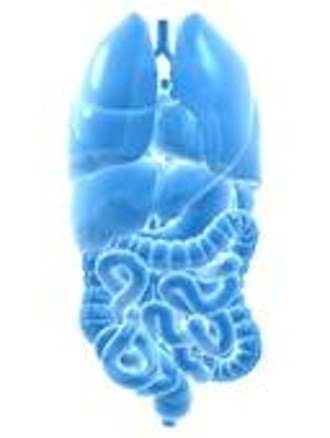
This is a recording of a live one day webinar all about the gut and the gut-brain axis in osteopathy.
- Teacher: Caroline Stone
This is a great one day summary of spinal and cranial fluids and global circulation related to that.
Discusses vascular dynamics, polarity of water and blood, electrical dynamics of fluid flow, polarity / biofield considerations and issues of water electron / cell membrane interface.
Discusses how csf circulates, looks at choroid function, vasomotion, spinal circulatory reflexes and venous dynamics to flow through the body.
Great overview!
- Teacher: Caroline Stone
This course has extensive resources, inks, articles, online videos from various sources about water, fluids, and all things related. It also has recordings of 2 full days of lectures by me, demonstrating practical approaches and explorations. This fluids course discusses the CVS and global circulation, includes lymphatics, and focuses on limbs, limb / axial interfaces, the trunk / coelum / visceral spaces etc
The Life of Breath lecture series
20 hours of lectures, spread across lots of mini modules, all discussing aspects of respiration, breathlessness, rib dynamics, thoracic cage movements, the mediastinum, dual innervation of the diaphragm, the psoas-crurae divide, the abdomen, interoception, pelvic breathing and the pelvic floor, the upper mediastinum, gaseous exchange, ventilation, perfusion, sleep, apnoea, nasal cycle, upper airways, dynamics for voice, inspiration, breathing and the brain, cerebral ad CSF flow, and more.
What is breathlessness? What can osteopaths do - what may we be able to offer people?
This lecture series covers a wide range of clinical relevant, evidence based, and clearly discussed pointers to enhance practice, whatever your level of 'respiratory' expertise
Inspired by the 'Life of Breath' project and over 30 years of osteopathic practice!
CONTENTS IN DETAIL:
This course contains a series of 12 modules plus an Introductory module and a techniques section at the end of the series. The content of each module is outlined below:
Introductory Module
This module contains an introductory lecture of 1 hour 10 min
plus:
- downloadable handouts of the lecture ( notes & 3 links for further reading) and an online viewable slideshow of all the powerpoint slides of the lecture
- 3 further links to articles for further reading
Module 1 : Ribs and structures
This module contains a 1 hour 33 min lecture plus a supplementary video of 11 min.
plus:
- downloadable handouts of the lecture ( notes & 1 link for further reading) and an online viewable slideshow of all the powerpoint slides of the lecture
- 9 links to articles and resources for further reading
Module 2: Respiration and exchange
This module contains a 2hour 43 min lecture plus 4 supplementary videos with a total viewing time of 41 min.
plus:
- downloadable handouts of the lecture ( notes & 5 links for further reading) and an online viewable slideshow of all the powerpoint slides of the lecture
Module Three - Perfusion, circulation, coelum and diaphragms
This module contains a lecture of 2 hours and 10 min plus 2 supplementary videos of 15 min and 3 min.
plus:
- downloadable handouts of the lecture ( notes & 5 links for further reading) and an online viewable slideshow of all the powerpoint slides of the lecture
- 4 links to articles for further reading
Module four - Other cavities and breathing, arousal and irritation, communication
This module contains a lecture of 2 hours and 48 min.Plus a talk over by Caroline Stone on a Newborn diaphragm repair.
plus:
- 5 links to articles for further reading
An additional section of module 5 is included which includes 1 article for extra reading.
Module Six - Noses, interoception, walking and visceral sliding surfaces in the thoracic cavity
This module contains a 44 min lecture plus a supplementary video of 31 min.
plus:
- 3 links to articles for further reading
Module Seven - Breathing and pharyngal tone, ENT and the stomatognathic system
This module contains a 3 hour lecture
plus:
- downloadable handouts of the lecture ( notes & 28 links for further reading) and an online viewable slideshow of all the powerpoint slides of the lecture
- plus 1 link to an article for extra reading
Module Eight - Dysfunctional Breathing, Stress/ Trauma and Sleep
This module contains 13 min video
plus:
- 3 links to articles for further reading
Module Nine - posture, orthostatic breathing dynamics, performance
This module contains a 1 hour 5 min lecture.
plus:
- 3 links to articles for further reading
Module Ten - Abdomino-pelvic respiration and fluid movement
This module contains a 1 hour 45 min lecture
plus:
- 1 slideshow
Module eleven - voice, speech, breath
This module contains a 2 hour 2 min lecture. Plus 2 supplementary short videos with a total viewing time of 6 min.
plus:
- 1 link to a further resource
Module twelve - respiratory conditions
This module consists of a 1 hour and 30 min video plus 2 supplementary videos with a total viewing time of 23 min
plus:
- 8 links to articles and extra resources
Various Techniques
This section contains 5 short clips demonstrating various techniques. Total viewing time approximately 15 min.
plus:
- 1 link to an extra resource.
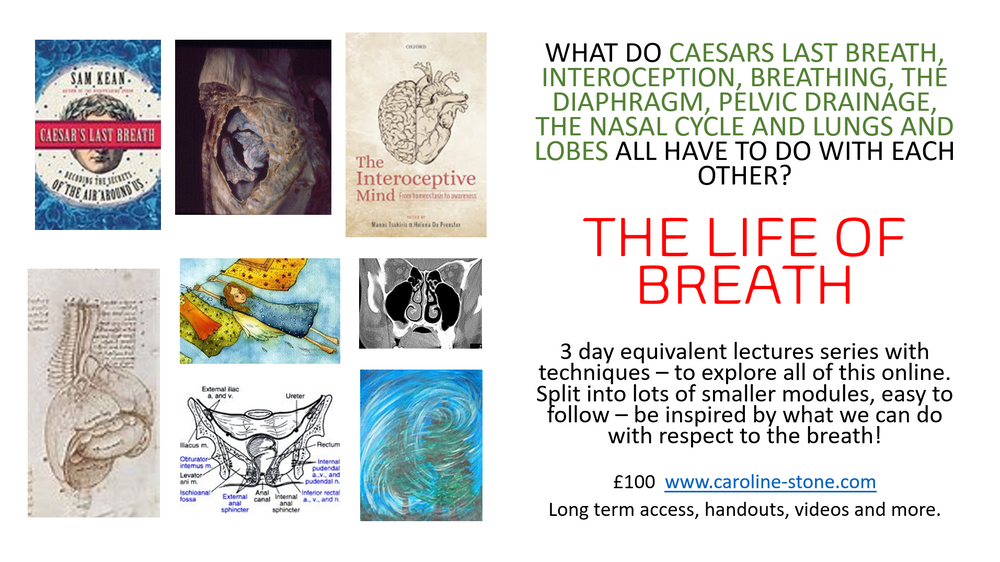
- Teacher: Caroline Stone
To appreciate my way of teaching 'visceral' as opposed to others I felt it would be useful to review the osteopathic philosophy through my lens, so that you can see where I am coming from. Initially you might feel this lecture is a log way from
"here is a description of the uterine ligaments and here is how you treat them" etc. But, i order to understand WHAT one does and more importantly WHY, context is required. So, you might not agree with everything I say in these videos, but
it does frame how I approach things, and so is the basis for all the dynamics throughout all my courses! Forewarned is forearmed
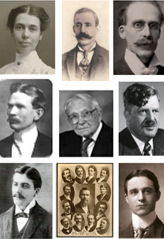
вэбинар *«Примитивные рефлексы»* часть 2, продолжение
Если первый вебинар был сосредоточен на переосмыслении и анализе истории примитивных рефлексов
и на том, как ранние рефлексы задают тон для широкой дискуссии о прогрессии нервного развития
и помог сформировать идею о том, что рефлексы - это сенсорное переживание,
которое продолжает накапливаться и питать дальнейшее развитие,
включая интероцептивный, а также зрительный, вестибулярный и соматический сенсорный вход,
*второй вебинар является продолжением исследования * интегрированных биологических колебаний,
возбуждения, сомато-интероцептивного поведения и глобальных исследований движения,
которые позволяют младенцам проявлять желание/волю и показывают, что рефлексы - это не единичные события,
а комплексное трехмерное исследование мира с сопутствующей физиологической и коммуникативной реактивностью,
в результате которого ребенок может развиться в автономное существо,
способное к осознанию и действию в спокойном, адаптивном, внимательном продвижении.
Благодаря этому исследованию появляется остеопатическое понимание задержки развития и разнообразия нервной системы.
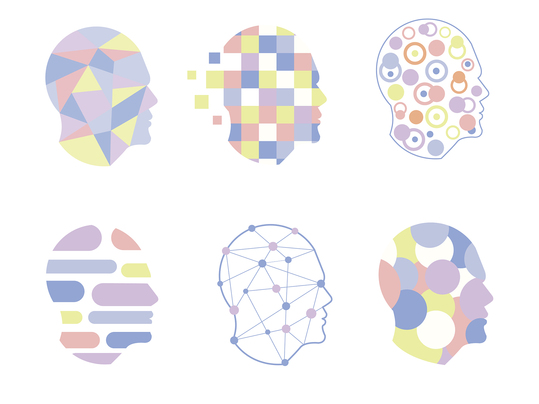
- Teacher: Caroline Stone
вэбинар *«Примитивные рефлексы»* часть 1
Краткое описание курса:
этот курс дает обширный обзор примитивных рефлексов и их интеграции у детей с рассмотрением развития нервной системы, а также то, как это влияет на текущую функцию и может проявляться и во взрослом возрасте.
Курс начинается с рассмотрения примитивных рефлексов у младенцев (от внутриутробного развития, через рождение, переход и раннюю жизнь, до интеграции двигательных рефлексов и вегетативной стабильности.
Курс будет рассматривать сенсорную обработку, типы интеграции баланса, роль и природу примитивной рефлекторной интеграции, влияние расстройств сенсорной обработки и количество объединяемых вместе факторов.
Курс также включает дополнительную висцеральную динамику для лечения проблем микробиома кишечника и мозга при дефиците внимания с гиперактивностью, аутистическом спектре и т. д.
В рамках курса также обсуждаются глобальные концепции моторного тонуса, когнитивной обработки, коммуникации и межличностного взаимодействия. Он рассматривает тестирование, оценку, реабилитационные упражнения и остеопатические концепции для терапевтического вклада. Кроме того, он выходит за рамки простой оценки сохраненных рефлексов и назначения упражнений, хотя это и полезно, и вместо этого добавляет в смесь вегетативную, гомеостатическую регуляцию, которая также сочетается с движением и сенсорной интеграцией, и связывает зрительную, слуховую и голосовую коммуникативную и балансирующую перспективы.

- Teacher: Caroline Stone
LIVE TEACHING EVERY 2 WEEKS! 12 MODULE SERIES.
This course builds on the content within the paeds series but now goes much further It integrates many aspects and gives clear direction for a wide variety of issues, for testing, evaluating, integrating care pathways, for appreciating the lived experiences of people and how to apply osteopathic care perspectives from many angles - including vagal autonomics, balance, vestibular, kinaesthetic, vision, proprioceptive, interoceptive, visceral, microbial, respiratory and sleep dynamics.
A whole body and whole person approach for these with retained reflexes and other neurosensory processing dynamics, developmental considerations and more. These topics are introduced into the short course in primitive reflexes, and the long neurodevelopmental distance learning course that is fully online (pre recorded) gives a very wide ranging overview.
The difference with the live streamed version is that the material is released in 2 hour modules, AND IS GUIDED LEARNING. These are broadcast live, you can ask questions, and then you are given tasks at home to complete . revised. YOU GET TO ASK QUESTIONS IN REAL TIME. There are 12 modules in all, which will give you the theory, the science, approaches to assessment and techniques and overall considerations for clinical application. For those of you that prefer a more didactic approach this is the option for you - the others are more suited for those that what a long standing resource package to dip in and out of. This 12 module series of live streamed courses ill also be accompanied by lots of research papers, articles and resources to support your learning and your clinical practice. It shows videos, discusses how to adapt approaches, and includes considerations from infants to adolescents.
Once you have done this course (or completed the distance learning version you can be eligible to attend one of the in person practical intensive 2 day events. The primitive reflexes one is in the Autumn, more details to follow.
- Teacher: Caroline Stone
This contains the resources for 2 and 3 day neuroendocrine workshops, purchased through caroline-stone.com
- Teacher: Caroline Stone
THE SYSTEMIC OSTEOPATHY TECHNIQUE COURSE – BREATHING LIFE BACK INTO OSTEOPATHY!
3 LINKED WEEKENDS
3 TECHNIQUE INTENSIVE BLOCKS, EACH OF 3 DAYS (18 hours of teaching time per block).
EACH WEEKEND PRACTICAL BLOCK COMES WITH A DETAILED PRE-COURSE E-LEARNING PROGRAMME COVERING LOTS OF THEORY, ANATOMY, EVIDENCE, OSTEOPATHIC HYPOTHESES AND CONCEPTS. 20 hours of theory, resources and learning to complete in your own time, PER BLOCK, in addition to the practical days.
The days are all hands on, and all the ‘lecturing’ is done in the pre course material, so you will need to review it before coming each time, to ensure you are up to speed!
A video technique library will be available for post course learning.
All elearning will be available from 1st September 2022 and will remain available for 12 months after the course ends in July 2023. Technique videos will become available after the practical course dates, and also remain available for 1 year after July 2023.
Dates: 2-3-4 DECEMBER 2022; 28-29-30 APRIL 2023; 14-15-16 JULY 2023.
Venue is the London School of Osteopathy, London. The Grange, 12 Grange Road, London SE1 3BE. 9-5 each day.
Costs:
Full price is £400 per weekend block, and includes 20 hours of supportive elearning content per block (60 hours in total). Must be bought together, not for sale as individual weekends.
EASTER SALE - to 30 April, 2022
£900 ON SALE NOW - INCLUDES ALL 3 WEEKENDS AND THEIR ELEARNING PACKAGES - NOT AVAILABLE FOR SALE INDIVIDUALLY. This is over 100 hours of content for less than £10 per hour! Full price for all practicals and elearning blocks in normally £1200.
Venue: London School of Osteopathy, 202 CAMBRIDGE HEATH ROAD, LONDON E2 9LJ. To book: visit osteobitesize.com/
PRACTICAL BLOCK ONE (INC TUTORIAL THREE) 2-3-4 DECEMBER 2022
THEME: FLUIDS, FASCIA, FINDING HEALTH – EXPLORING VASCULAR, LYMPHATIC, SEROUS AND INSTERSTITIAL FLUIDS, CHANNELS AND CONNECTIONS. INCLUDES APPROACHES TO EVALUATING VISCOSITY, 4TH STATES AND FLOW / CHARGED DYNAMICS. HOW OSTEOPATHIC CONCEPTS RELATE TO FLUID DYNAMICS.
You will explore:
• Feeling arteries and veins and working through their dynamics
• Examining the lymphatic system and considering Biotensegrity, and how to use fascial and somatic mobility and tissue testing to explore interstitial space.
• You will experience working with various serous interfaces, including the peritoneal layers, pleural layers and the spinal fluid systems.
• Useful whole body and local osteopathic diagnostic and examination concepts relevant to exploring the fluid dynamics in the tissues.
You elearning will give you:
• Anatomical insights into ways to explore fluid systems
• How the fluid system works
• Concepts of microcirculation, interstitial dynamics, pericytes, glymphatics and other interesting dynamics, such as interstitial flow along meridians.
• Understanding in more depth the ‘rule of the artery’
• You will explore the 4th phase of water, charge ion theories for fluid flow • viscosity and physiology of fluid dynamics
• a brief insight into vasomotion, which will be further explored in stage two of the programme and covered in the second practical block.
• It will also include cellular respiration and metabolism, biotensegrity concepts and how the heart works
• THE HEART IS NOT A PUMP IS A KEY CONCEPT YOU WILL LEARN.
• YOU WILL NOT NEED AWARNESS OF THE IVM TO FOLLOW THIS COURSE, but the course will illustrate where the IVM might come from and what fluids have to do with it (and these concepts will be further elaborated in the second stage of the elearning).
• Osteopathic philosophy and concepts relating to whole body fluid dynamics
THEME: PRACTICAL BLOCK TWO 28-29-30 APRIL 2023
THE AUTONOMICS AND THE ENDOCRINE IMMUNE SYSTEMS, BODY MAPPING TECHNIQUES, FOCUSING, VAGAL AND AUTONOMIC TONE, AROUSAL AND STRESS / TRAUMA TECHNIQUES. EVALUATING OSTEOPATHIC LESIONS AND EXPLORING COMMUNICATION BARRIERS TO HEALTH. OSTEOPATHIC CONCEPTS RELATING TO NEUROPHYSIOLOGY AND ADAPTIVE DYNAMICS IN THE WHOLE PERSON.
You will explore:
• Evaluation of the nervous system by tissue exploration rather than traditional clinical methods tests – somatic patterns, reflex dynamics, balance and vision
• Considering trauma, defensiveness, protection and emotional dynamics in tissues • Looking at body mapping, focusing techniques, identifying boundaries and exploring ‘consent’ by tissue responsiveness
• Exploring safe zones in tissues, tissue work arounds, identifying when local and global listening is fooling you!
• Palpation of autonomic plexi, tracking vasomotion dynamics eg dermatome, sclerotome, myotome and viscerotome.
• Exploration of vagal tone and pathways
Osteopathic concepts around engaging with the nervous system and somatoemotional dynamics
Your elearning will give you:
Understanding the autonomic system, central autonomic network and spinal cord autonomic regulation
Understanding vagal tone and neuroception and the social engagement system
Heart-brain, gut-brain and neuroendocrine immune dynamics
The vagal and trigeminal dynamics
Somatic experiencing concepts, interoception and mind body links
Osteopathic concepts regarding osteopathic centres, spinal interneurone dynamics and the ‘osteopathic lesion’ revisited
Palpation or interaction with plexi and pacemakers
Concepts of arousal, vigilance, memory, learning and development
Primitive reflex dynamics and learned responses
PRACTICAL BLOCK THREE (INC TUTORIAL EIGHT) 14-15-16 JULY 2023
PHYSIOLOGICAL VISCERAL CONCEPTS –THORAX, ABDOMINAL AND PELVIC OVERVIEW. INCLUDES 3D ORGAN CONTACTS, SOMATOVISCERAL CONNECTIONS AND ‘MANUAL ULTRASOUND’ ORGAN TESTING, PHYSIOLOGICAL ORGAN EVALUATION AND ALSO INCLUDES DOING NON IVM ‘CRANIAL’ –
ACCESSING THE CRANIAL SPACES AND FACE. 3 DIMENSIONAL AND INTEGRATIVE CLINICAL EVALUATION WILL BE INCLUDED.
You will explore:
Coelomic palpation
Working with the body cavities
A non cranial / IVM approach to the cranium and CNS
The facial and cranial integration, the splanchnovisceral dynamics
Palpation of the sliding surfaces in the visceral spaces
Assessment of organs, their conduits and attachments, pressure systems and relationships and viscero-0somatic dynamics
Interpreting physiological aspects of organ function
Your elearning will give you:
An realistic approach to understanding the anatomy of the body cavities and organs
A view on the physiology of the serous membranes of the pleura, peritonenum, dura and global fascial-visceral dynamics
Interactions between the biomechanics of the organs and their physiological functions
Interface between mechanical somatic and visceral dynamics, how body movement impacts on physiology and vice versa
How the musculoskeletal system is NOT the primary machinery of life but is subservient to visceral sexual and eliminatory dynamics for survival of the organism
Whole body osteopathic concepts and the physiology and health in osteopaths concepts and why hands on is still so powerful
Apprtoaches to defending the osteopathic approach so health
- Teacher: Caroline Stone
Skip site announcements
